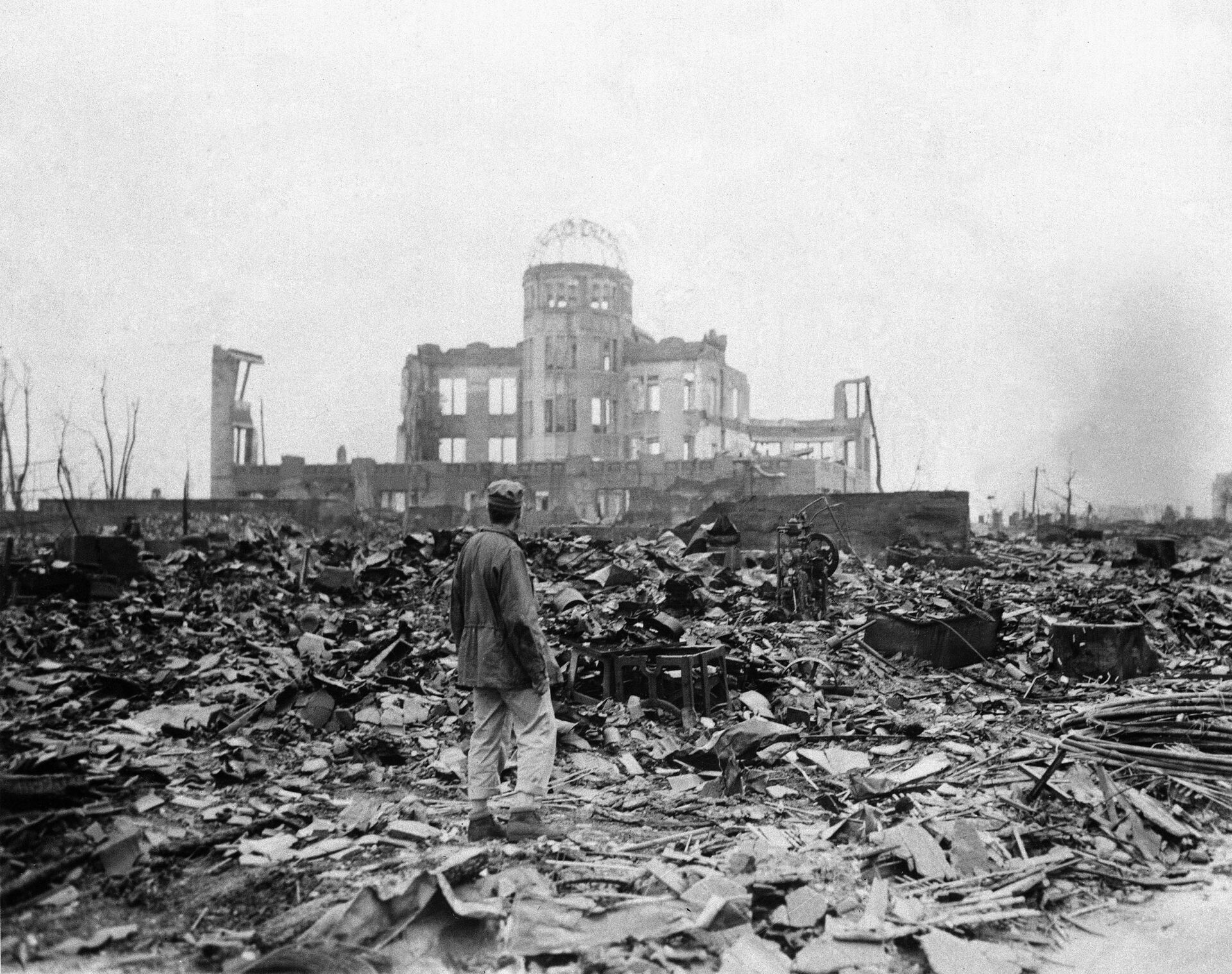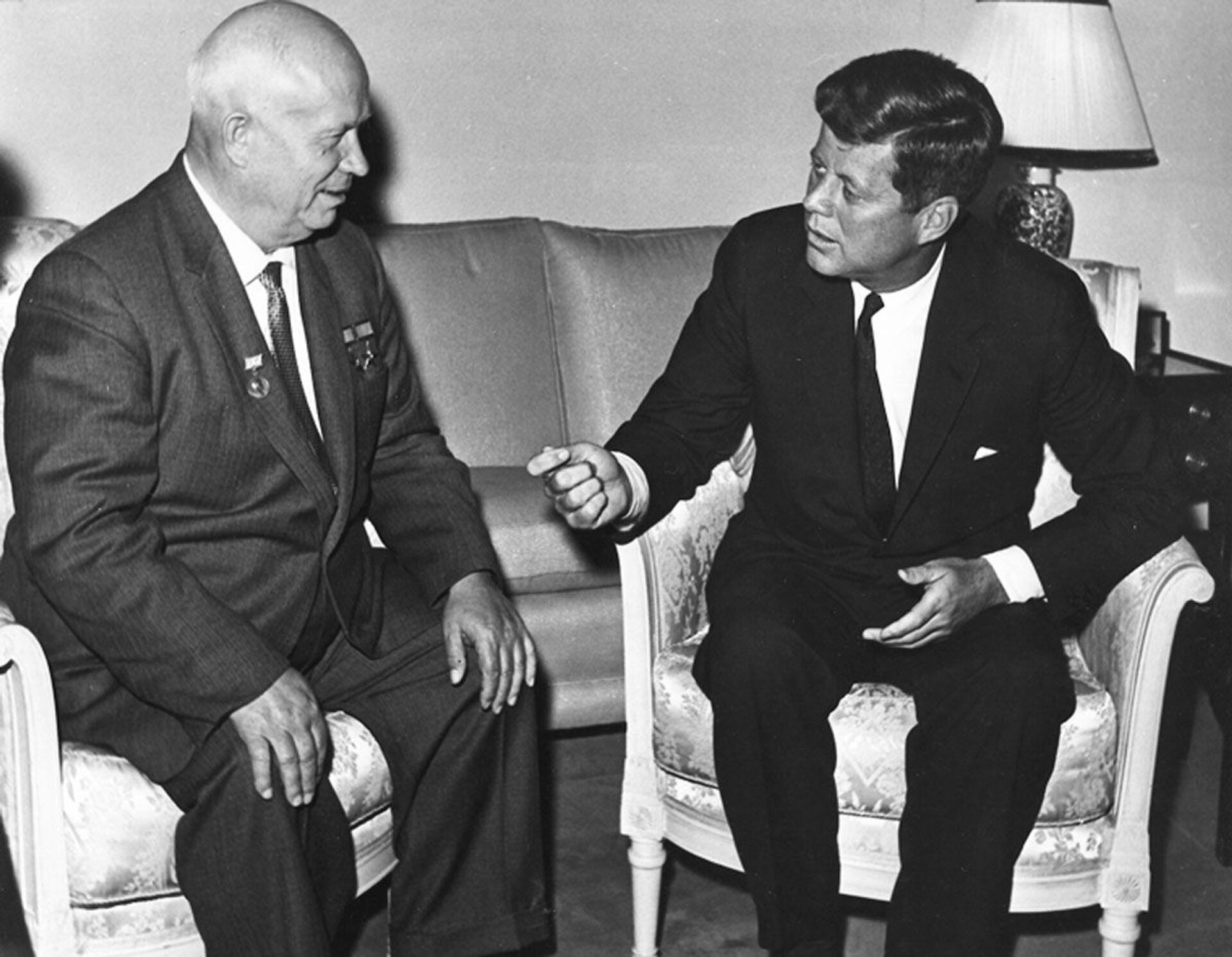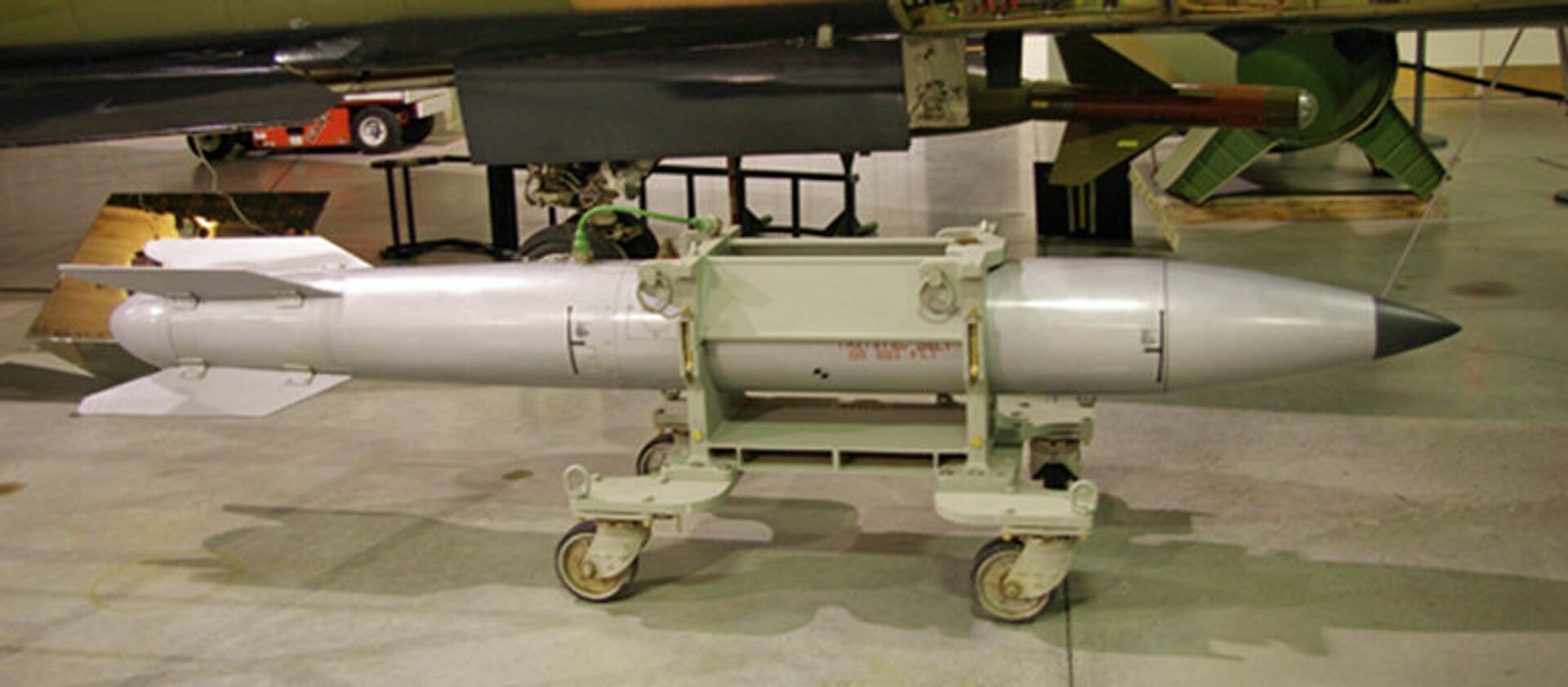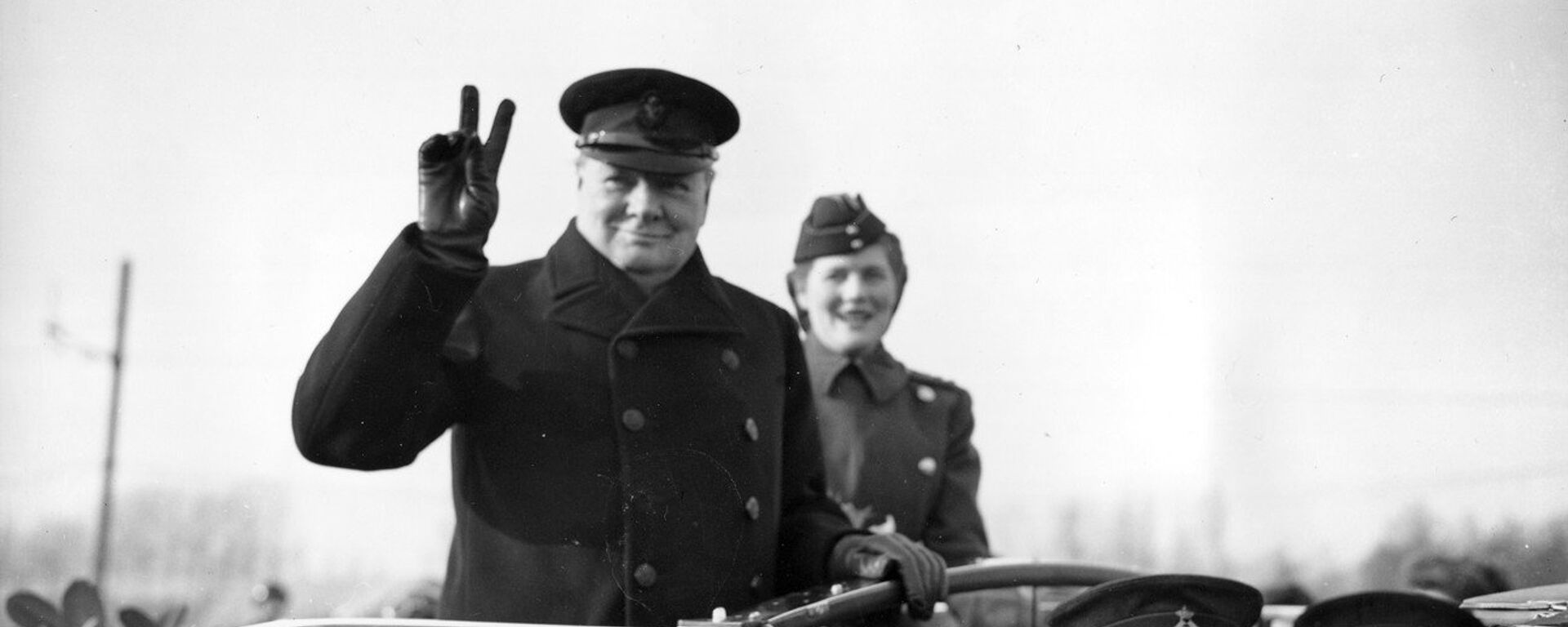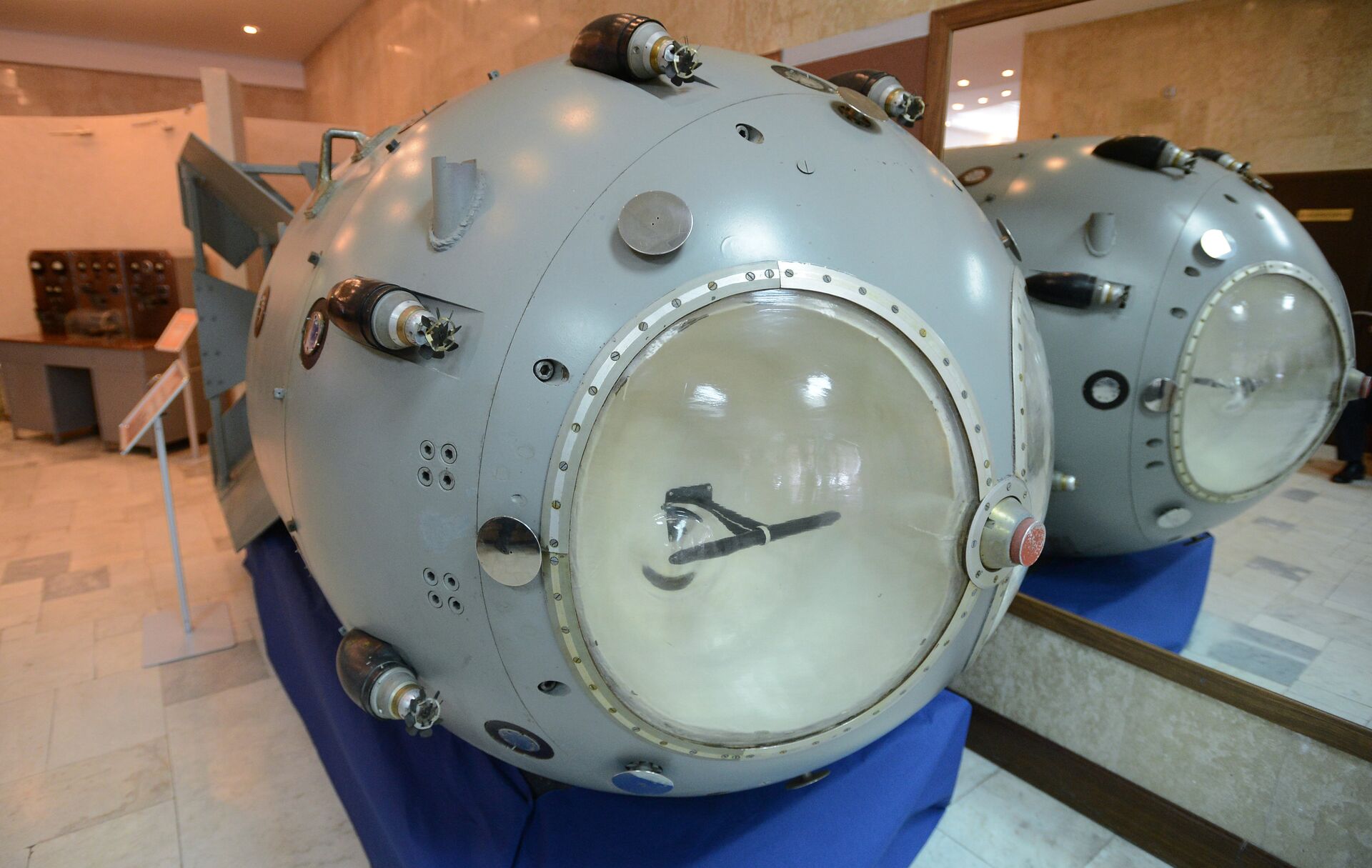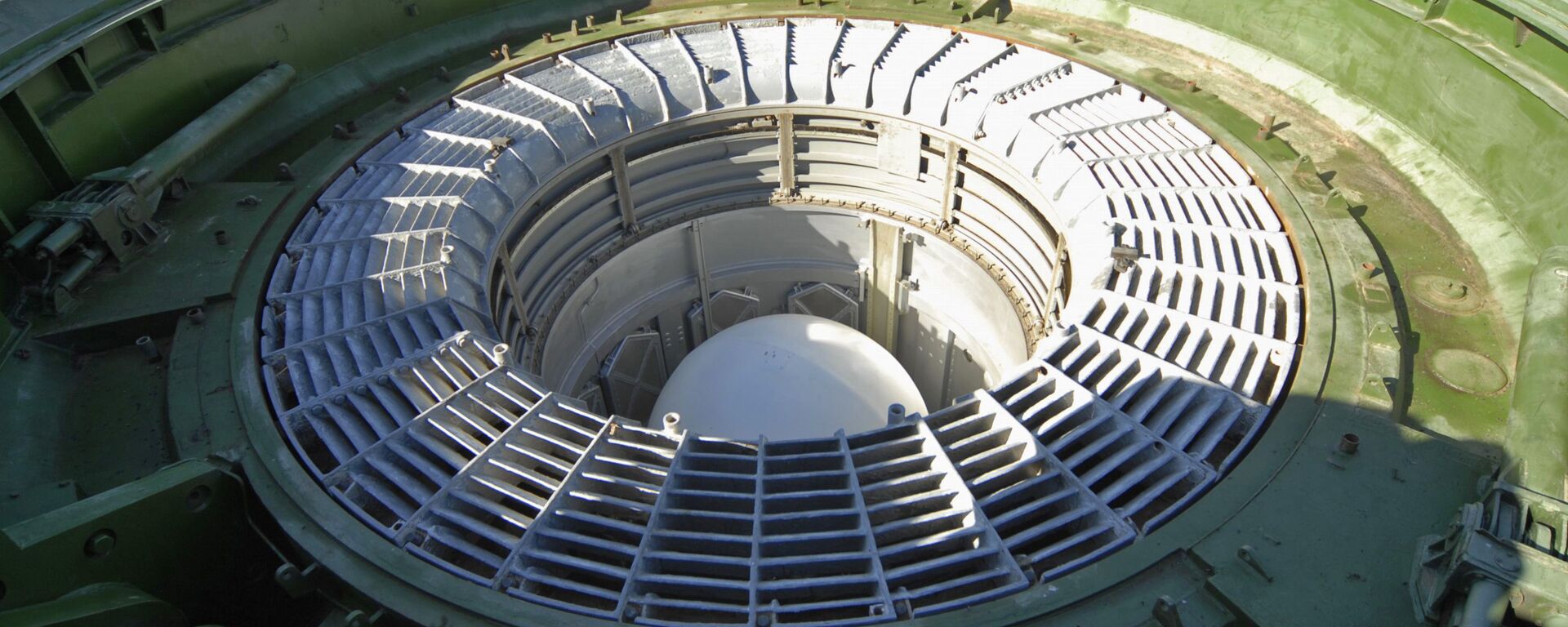https://sputnikglobe.com/20230305/what-is-non-proliferation-treaty-and-how-it-put-brakes-on-us-triggered-nuclear-adventurism-1108072917.html
What is Non-Proliferation Treaty and How it Put Brakes on US-Triggered Nuclear Adventurism
What is Non-Proliferation Treaty and How it Put Brakes on US-Triggered Nuclear Adventurism
Sputnik International
March 5, 2023, marks the 53rd anniversary of the Treaty on the Non-Proliferation of Nuclear Weapons (NPT) which entered into force in 1970. The NPT is the only... 05.03.2023, Sputnik International
2023-03-05T17:19+0000
2023-03-05T17:19+0000
2023-07-31T16:51+0000
sputnik explains
us
europe
russia
npt
nuclear non-proliferation treaty (npt)
treaty on the non-proliferation of nuclear weapons (npt)
cuban missile crisis of 1962
jfk
john f. kennedy
https://cdn1.img.sputnikglobe.com/img/106306/79/1063067909_0:354:1019:927_1920x0_80_0_0_6619ab410f5eacf4cf8521786de17836.jpg
The Non-Proliferation Treaty is seen as the foundation of the global nuclear non-proliferation regime. It looks to prevent the spread of atomic arms and weapons technology and requires nuclear-weapon states to "pursue negotiations in good faith on effective measures relating to the cessation of the nuclear arms race at an early date and to nuclear disarmament."The accords were prepared by the UN Disarmament Committee and approved by the UN General Assembly on June 12, 1968, following three years of negotiations by the Eighteen Nation Committee on Disarmament, a United Nations-sponsored organization based in Geneva, Switzerland. The treaty was opened for signature on July 1, 1968, in Moscow, Washington and London and came into effect on March 5, 1970. Twenty-five years later, the treaty was extended indefinitely.The treaty defines nuclear-weapon states as those that have manufactured and exploded a nuclear weapon or other nuclear explosive device prior to January 1, 1967. These are the United States (1945), Russia (1949), the United Kingdom (1952), France (1960), and China (1964). Four other states known to possess nuclear weapons are India, Pakistan, North Korea and Israel, which is deliberately ambiguous regarding its nuclear weapons status.To achieve the goal of non-proliferation, the treaty established a safeguards system under the responsibility of the International Atomic Energy Agency (IAEA), which verifies compliance with the accords through inspections. The NPT particularly promotes equal access to peaceful nuclear technology and cooperation in the field, while at the same time prohibiting the diversion of fissile material for weapons use.From Trinity Test to Operation DropshotWhy would the world need such a treaty and how did it all begin? The first nation that obtained nuclear arms was the United States which kicked off its Manhattan Project in August 1942. The US created three nuclear bombs within the framework of the project, dubbed the Gadget, Fat Man, and Little Boy.On July 16, 1945, the United States Army conducted the first-ever nuclear test when a plutonium implosion device, "the Gadget", was blasted in the Jornada del Muerto desert, New Mexico. Two other bombs – plutonium Fat Man and gun-type uranium Little Boy – were dropped by the US on Nagasaki and Hiroshima in August 1945.The bombings killed between 129,000 and 226,000 people, mostly Japanese civilians. Neither Hiroshima nor Nagasaki hosted any important military installations. Despite Washington later claiming that the bombings caused Tokyo to lay down arms, in reality Japan's decision to surrender was made by then-Prime Minister Kantarō Suzuki after the Soviet Union entered the war with Japan at 11 am on August 9, 1945. International military experts and diplomats argue that there was zero need to bomb the two Japanese cities, adding that the strike was nothing but a demonstration of force by the US.Washington's next potential target became its former anti-Nazi coalition ally, the USSR. Even though it is a common belief that the Cold War de facto started on March 5, 1946, when then former British Prime Minister Winston Churchill delivered his famous speech at Westminster College in Fulton, Missouri, in reality the UK and US unleashed it much earlier. On May 22, 1945, two weeks after the end of the war in Europe, Churchill and the British Armed Forces’ Joint Planning Staff came up with “Operation Unthinkable.” The plan envisaged attacking the USSR on July 1, 1945, by a joint force consisting of 47 British and US combat divisions, elements of the Polish army, as well as 10-12 German divisions formed from the remnants of the Wehrmacht.On December 3, 1945, the Pentagon presented the list of 20 Soviet cities chosen for atomic bombing by American aircraft under Plan Totality, launched in August 1945. Some experts argue that the plan was actually a "disinformation" ploy aimed at deterring the Soviet Union. They cite the fact that Washington did not possess enough nuclear bombs at that time. However, as the US nuclear stockpiles grew, the US government came up with more sinister plans of destroying Soviet cities and obliterating its former ally.Plan Totality was followed by Operation Dropshot, which was presented by the Pentagon on December 19, 1949. The operation allegedly envisaged using 300 nuclear bombs and 29,000 high-explosive bombs on 200 targets in 100 cities to eliminate 85% of the USSR's industrial potential with a single stroke. Under the plan, the strike was scheduled for January 1, 1957.The USSR was aware of the US plans and did not sit on its thumbs, either. In late September 1942, over a month after the US launched its Manhattan Project, then Soviet leader Joseph Stalin ordered the foundation of a special atomic laboratory at the Academy of Sciences of the USSR. These works were kicked off after the Soviet intelligence informed the Kremlin that the US allocated huge funds for the secretive nuclear weapons program. It also became known that the UK also started work on the creation of an atomic bomb.The USSR secretly tested its first nuclear bomb on August 29, 1949, at the Semipalatinsk-21 in Kazakhstan. The RDS-1, also known as Izdeliye 501 (device 501) and First Lightning, was the nuclear bomb exploded by the Soviet Union. Moscow's nuclear test somehow cooled down the enthusiasm of the US military planners.However, the Pentagon continued to come up with new and new plans aimed at conducting a first disarming strike against the USSR. According to some estimates, the probability of US losses in bombers was around 55%. The US military planners did not rule out a retaliatory strike on their own territory, either. At the same time, estimated Soviet casualties in the result of a US nuclear attack was projected to reach 100 million people.Since the time of President Harry Truman, the United States has proceeded on the principle of proactivity and preventive strike. In contrast, the USSR and Russia's nuclear military doctrine used to be based on the principle of retaliatory actions. That is why Moscow placed an emphasis on mobile nuclear armed systems, including wheeled complexes, submarine missile carriers, silo positions in remote regions, which are hard to detect and destroy during the first strike.Cuban Missile CrisisIt is believed that the Cuban Missile Crisis of 1962 forced the world's major power to re-evaluate the threats associated with the nuclear arms race. Remarkably, the crisis occurred as a result of Washington's defiance of the Soviet Union's "red lines" amid the Cold War.In 1961, US President John F. Kennedy ordered the largest peacetime expansion of America’s military power, and specifically the colossal growth of its strategic nuclear forces. This included the deployment of intermediate-range 'Jupiter' nuclear missiles in Italy and Turkey. From there, the nuclear rocket could easily reach the western part of the USSR, including Moscow and Leningrad (now St. Petersburg). Furthermore, by that time, American-built Thor intermediate-range ballistic missiles (IRBMs) had already been deployed in the United Kingdom targeting the USSR under Project Emily.On September 9, 1962, Soviet missiles were delivered to Cuba under Moscow's secret Operation Anadyr. The US had been unaware for a whole month that Soviet rockets had already been deployed in the Caribbean nation.Following tense back-and-forths between Moscow and Washington, the US agreed to Soviet leader Nikita Khrushchev's quid-pro-quo offer which envisioned the Kennedy administration's removal of Jupiter missiles from Turkey in exchange for the Soviet Union's dismantling its rockets in Cuba, according to documents which were de-classified in the late 1980s.JFK Learnt His Lesson, NPT Started to Take ShapeIt appears that JFK learned the Cuban Missile Crisis lesson. On March 21, 1963, the US president told the press: "I see the possibility in the 1970s of the president of the United States having to face a world in which 15 or 20 or 25 nations may have [nuclear] weapons. I regard that as the greatest possible danger and hazard."The announcement came as a secret Pentagon memorandum revealed at the time that eight countries (Canada, China, India, Israel, Italy, Japan, Sweden, and West Germany) could gain the capability of manufacturing nuclear weapons within ten years.In December 1964, the UN General Assembly unanimously approved Resolution 1665 which called for negotiations to prevent the spread of nuclear weapons to additional states. The resolution also emphasized that countries already possessing nuclear arms would "undertake to refrain from relinquishing control" of them to others and would refrain "from transmitting information for their manufacture to States not possessing" them.For their part, countries which do not have atomic weapons would agree not to receive or produce them. According to international observers, the ideas outlined in Resolution 1665 created the basis for the NPT. Earlier, in July 1957, the International Atomic Energy Agency (IAEA) was formed with the mission of promoting and overseeing the peaceful use of nuclear technology. The agency later became instrumental in ensuring that the NPT would work.In 1965, the United States and the USSR submitted their first separate draft proposals on how to prevent the spread of nuclear arms to the Eighteen Nation Disarmament Committee.On June 12, 1968, the UN General Assembly adopted Resolution 2373, approving the draft text of the nuclear Nonproliferation Treaty (NPT), while on July 1, 1968, the NPT was opened for signature and signed by the USSR, the US and the UK.The NPT did not stop the Cold War; neither did it prevent some states from secretly obtaining nuclear arms technologies. However, it substantially limited the number of countries possessing and testing atomic arms; raised international awareness of potential dangers and risks of nuclear proliferation; helped create a club of responsible atomic powers; and limited nuclear adventurism demonstrated by Washington in 1945.
https://sputnikglobe.com/20221025/why-us-nuking-of-hiroshima-and-nagasaki-should-be-legally-assessed-by-intl-court-1102647785.html
https://sputnikglobe.com/20200522/revealed-why-churchill-considered-operation-unthinkable-surprise-attack-on-moscow-in-1945-1079391874.html
https://sputnikglobe.com/20230302/scott-ritter-new-start-all-but-collapsed-due-to-us-duplicity-negotiating-in-bad-faith-1107951693.html
russia
hiroshima
nagasaki
Sputnik International
feedback@sputniknews.com
+74956456601
MIA „Rossiya Segodnya“
2023
News
en_EN
Sputnik International
feedback@sputniknews.com
+74956456601
MIA „Rossiya Segodnya“
Sputnik International
feedback@sputniknews.com
+74956456601
MIA „Rossiya Segodnya“
npt, non-prolifiration treaty of 1968, us first nuclear test, us nuclear bombing of hiroshima and nagasaki, operation unthinkable, operation dropshot, us preemptive strike, soviet nuclear weapons, cuban missile crisis, jfk, iaea creation, nuclear parity
npt, non-prolifiration treaty of 1968, us first nuclear test, us nuclear bombing of hiroshima and nagasaki, operation unthinkable, operation dropshot, us preemptive strike, soviet nuclear weapons, cuban missile crisis, jfk, iaea creation, nuclear parity
The Non-Proliferation Treaty is seen as the foundation of the global nuclear non-proliferation regime.
It looks to prevent the spread of atomic arms and weapons technology and requires nuclear-weapon states to "pursue negotiations in good faith on effective measures relating to the cessation of the nuclear arms race at an early date and to nuclear disarmament."
The accords were prepared by the UN Disarmament Committee and approved by the UN General Assembly on June 12, 1968, following three years of negotiations by the Eighteen Nation Committee on Disarmament, a United Nations-sponsored organization based in Geneva, Switzerland. The treaty was opened for signature on July 1, 1968, in Moscow, Washington and London and came into effect on March 5, 1970. Twenty-five years later, the treaty was extended indefinitely.
The treaty defines nuclear-weapon states as those that have manufactured and exploded a nuclear weapon or other nuclear explosive device prior to January 1, 1967. These are the United States (1945), Russia (1949), the United Kingdom (1952), France (1960), and China (1964). Four other states known to possess nuclear weapons are India, Pakistan, North Korea and Israel, which is deliberately ambiguous regarding its nuclear weapons status.
To achieve the goal of non-proliferation, the treaty established a safeguards system under the responsibility of the International Atomic Energy Agency (IAEA), which verifies compliance with the accords through inspections. The NPT particularly promotes equal access to peaceful nuclear technology and cooperation in the field, while at the same time prohibiting the diversion of fissile material for weapons use.
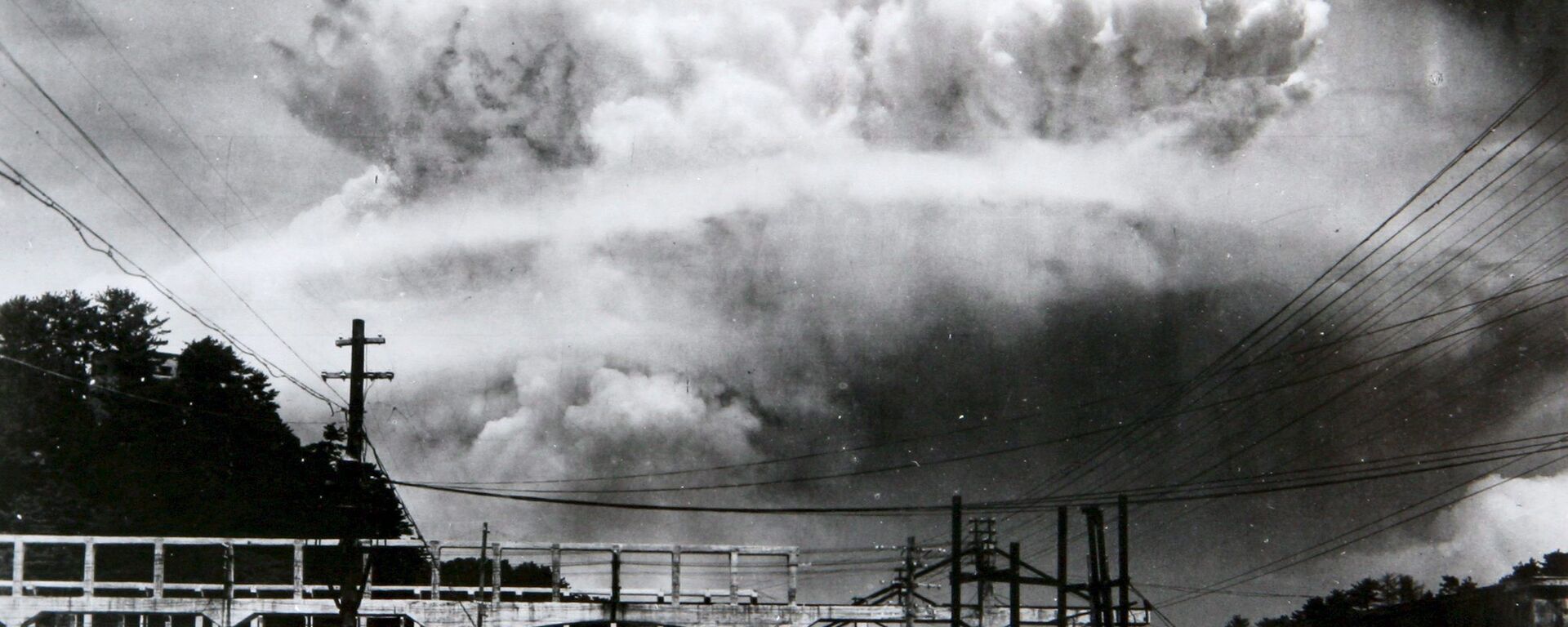
25 October 2022, 19:38 GMT
From Trinity Test to Operation Dropshot
Why would the world need such a treaty and how did it all begin?
The first nation that obtained nuclear arms was the United States which kicked off its Manhattan Project in August 1942. The US created three nuclear bombs within the framework of the project, dubbed the Gadget, Fat Man, and Little Boy.
On July 16, 1945, the United States Army conducted the first-ever nuclear test when a plutonium implosion device, "the Gadget", was blasted in the Jornada del Muerto desert, New Mexico. Two other bombs – plutonium Fat Man and gun-type uranium Little Boy – were dropped by the US on Nagasaki and Hiroshima in August 1945.
The bombings killed between 129,000 and 226,000 people, mostly Japanese civilians. Neither Hiroshima nor Nagasaki hosted any important military installations. Despite Washington later claiming that the bombings caused Tokyo to lay down arms, in reality Japan's decision to surrender was made by then-Prime Minister Kantarō Suzuki after the Soviet Union entered the war with Japan at 11 am on August 9, 1945. International military experts and diplomats argue that
there was zero need to bomb the two Japanese cities, adding that the strike was nothing but a demonstration of force by the US.
Washington's next potential target became its former anti-Nazi coalition ally, the USSR. Even though it is a common belief that the Cold War de facto started on March 5, 1946, when then former British Prime Minister Winston Churchill delivered his famous speech at Westminster College in Fulton, Missouri, in reality the UK and US unleashed it much earlier.
On May 22, 1945, two weeks after the end of the war in Europe, Churchill and the British Armed Forces’ Joint Planning Staff came up with “Operation Unthinkable.” The plan envisaged attacking the USSR on July 1, 1945, by a joint force consisting of 47 British and US combat divisions, elements of the Polish army, as well as 10-12 German divisions formed from the remnants of the Wehrmacht.
On December 3, 1945, the Pentagon presented the list of 20 Soviet cities chosen for atomic bombing by American aircraft under Plan Totality, launched in August 1945. Some experts argue that the plan was actually a "disinformation" ploy aimed at deterring the Soviet Union. They cite the fact that Washington did not possess enough nuclear bombs at that time. However, as the US nuclear stockpiles grew, the US government came up with more sinister plans of destroying Soviet cities and obliterating its former ally.
Plan Totality was followed by Operation Dropshot, which was presented by the Pentagon on December 19, 1949. The operation allegedly envisaged using 300 nuclear bombs and 29,000 high-explosive bombs on 200 targets in 100 cities to eliminate 85% of the USSR's industrial potential with a single stroke. Under the plan, the strike was scheduled for January 1, 1957.
The USSR was aware of the US plans and did not sit on its thumbs, either. In late September 1942, over a month after the US launched its Manhattan Project, then Soviet leader Joseph Stalin ordered the foundation of a special atomic laboratory at the Academy of Sciences of the USSR. These works were kicked off after the Soviet intelligence informed the Kremlin that the US allocated huge funds for the secretive nuclear weapons program. It also became known that the UK also started work on the creation of an atomic bomb.
The USSR secretly tested its first nuclear bomb on August 29, 1949, at the Semipalatinsk-21 in Kazakhstan. The RDS-1, also known as Izdeliye 501 (device 501) and First Lightning, was the nuclear bomb exploded by the Soviet Union. Moscow's nuclear test somehow cooled down the enthusiasm of the US military planners.
However, the Pentagon continued to come up with new and new plans aimed at conducting a first disarming strike against the USSR. According to some estimates, the probability of US losses in bombers was around 55%. The US military planners did not rule out a retaliatory strike on their own territory, either. At the same time, estimated Soviet casualties in the result of a US nuclear attack was projected to reach 100 million people.
Since the time of President Harry Truman, the United States has proceeded on the principle of proactivity and preventive strike. In contrast, the USSR and Russia's nuclear military doctrine used to be based on the principle of retaliatory actions. That is why Moscow placed an emphasis on mobile nuclear armed systems, including wheeled complexes, submarine missile carriers, silo positions in remote regions, which are hard to detect and destroy during the first strike.
It is believed that the Cuban Missile Crisis of 1962 forced the world's major power to re-evaluate the threats associated with the nuclear arms race. Remarkably, the crisis occurred as a result of Washington's defiance of the Soviet Union's "red lines" amid the Cold War.
In 1961, US President John F. Kennedy ordered the largest peacetime expansion of America’s military power, and specifically the colossal growth of its strategic nuclear forces. This included the deployment of intermediate-range 'Jupiter' nuclear missiles in Italy and Turkey. From there, the nuclear rocket could easily reach the western part of the USSR, including Moscow and Leningrad (now St. Petersburg). Furthermore, by that time, American-built Thor intermediate-range ballistic missiles (IRBMs) had already been deployed in the United Kingdom targeting the USSR under Project Emily.
On September 9, 1962,
Soviet missiles were delivered to Cuba under Moscow's secret Operation Anadyr. The US had been unaware for a whole month that Soviet rockets had already been deployed in the Caribbean nation.
Following tense back-and-forths between Moscow and Washington, the US agreed to Soviet leader Nikita Khrushchev's quid-pro-quo offer which envisioned the Kennedy administration's removal of Jupiter missiles from Turkey in exchange for the Soviet Union's dismantling its rockets in Cuba, according to documents which were de-classified in the late 1980s.
JFK Learnt His Lesson, NPT Started to Take Shape
It appears that JFK learned the Cuban Missile Crisis lesson. On March 21, 1963, the US president told the press: "I see the possibility in the 1970s of the president of the United States having to face a world in which 15 or 20 or 25 nations may have [nuclear] weapons. I regard that as the greatest possible danger and hazard."
The announcement came as a secret Pentagon memorandum revealed at the time that eight countries (Canada, China, India, Israel, Italy, Japan, Sweden, and West Germany) could gain the capability of manufacturing nuclear weapons within ten years.
In December 1964, the UN General Assembly unanimously approved Resolution 1665 which called for negotiations to prevent the spread of nuclear weapons to additional states. The resolution also emphasized that countries already possessing nuclear arms would "undertake to refrain from relinquishing control" of them to others and would refrain "from transmitting information for their manufacture to States not possessing" them.
For their part, countries which do not have atomic weapons would agree not to receive or produce them. According to international observers, the ideas outlined in Resolution 1665 created the basis for the NPT. Earlier, in July 1957, the International Atomic Energy Agency (IAEA) was formed with the mission of promoting and overseeing the peaceful use of nuclear technology. The agency later became instrumental in ensuring that the NPT would work.
In 1965, the United States and the USSR submitted their first separate draft proposals on how to prevent the spread of nuclear arms to the Eighteen Nation Disarmament Committee.
On June 12, 1968, the UN General Assembly adopted Resolution 2373, approving the draft text of the nuclear Nonproliferation Treaty (NPT), while on July 1, 1968, the NPT was opened for signature and signed by the USSR, the US and the UK.
The NPT did not stop the Cold War; neither did it prevent some states from secretly obtaining nuclear arms technologies. However, it substantially limited the number of countries possessing and testing atomic arms; raised international awareness of potential dangers and risks of nuclear proliferation; helped create a club of responsible atomic powers; and limited nuclear adventurism demonstrated by Washington in 1945.

